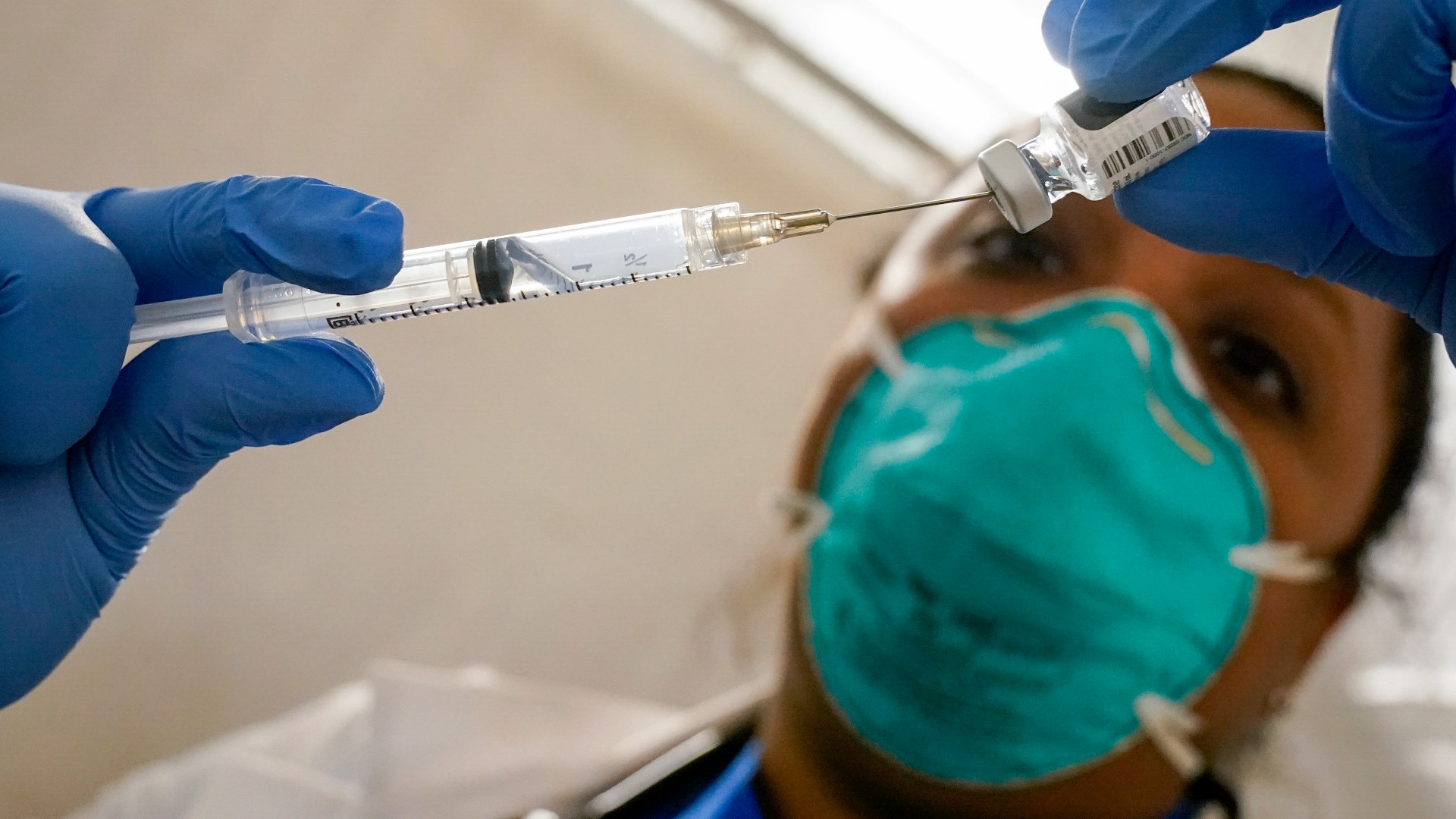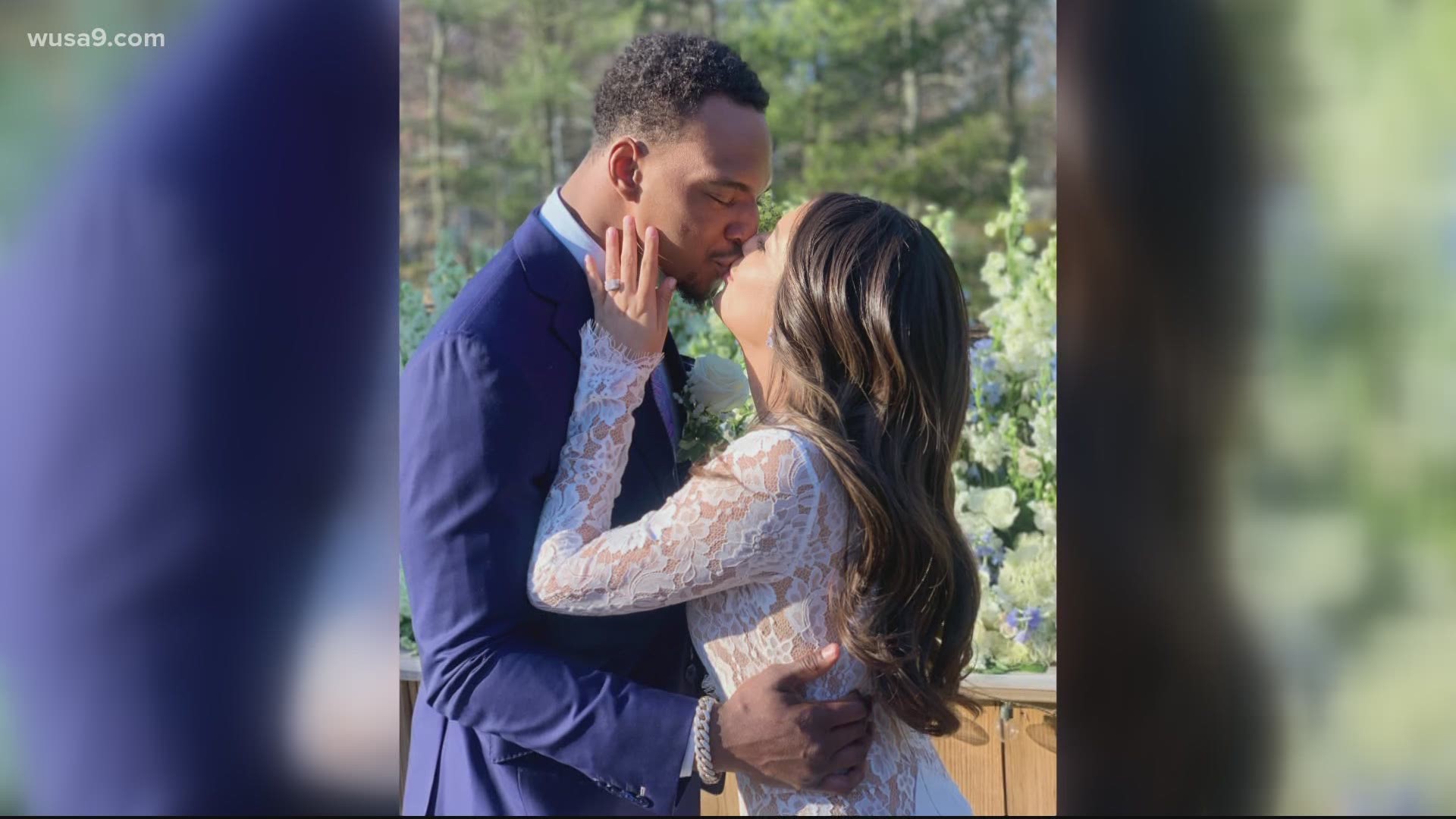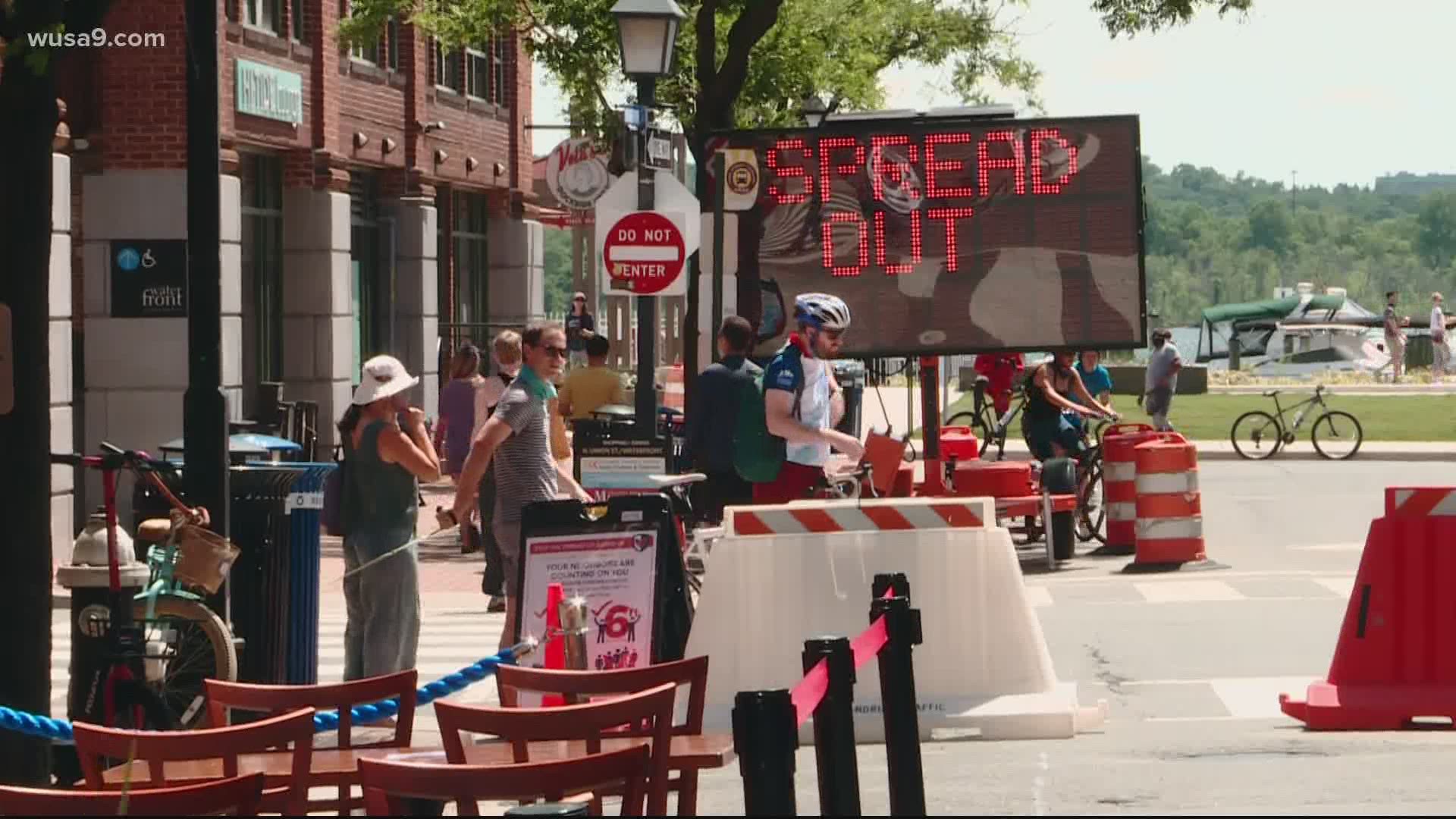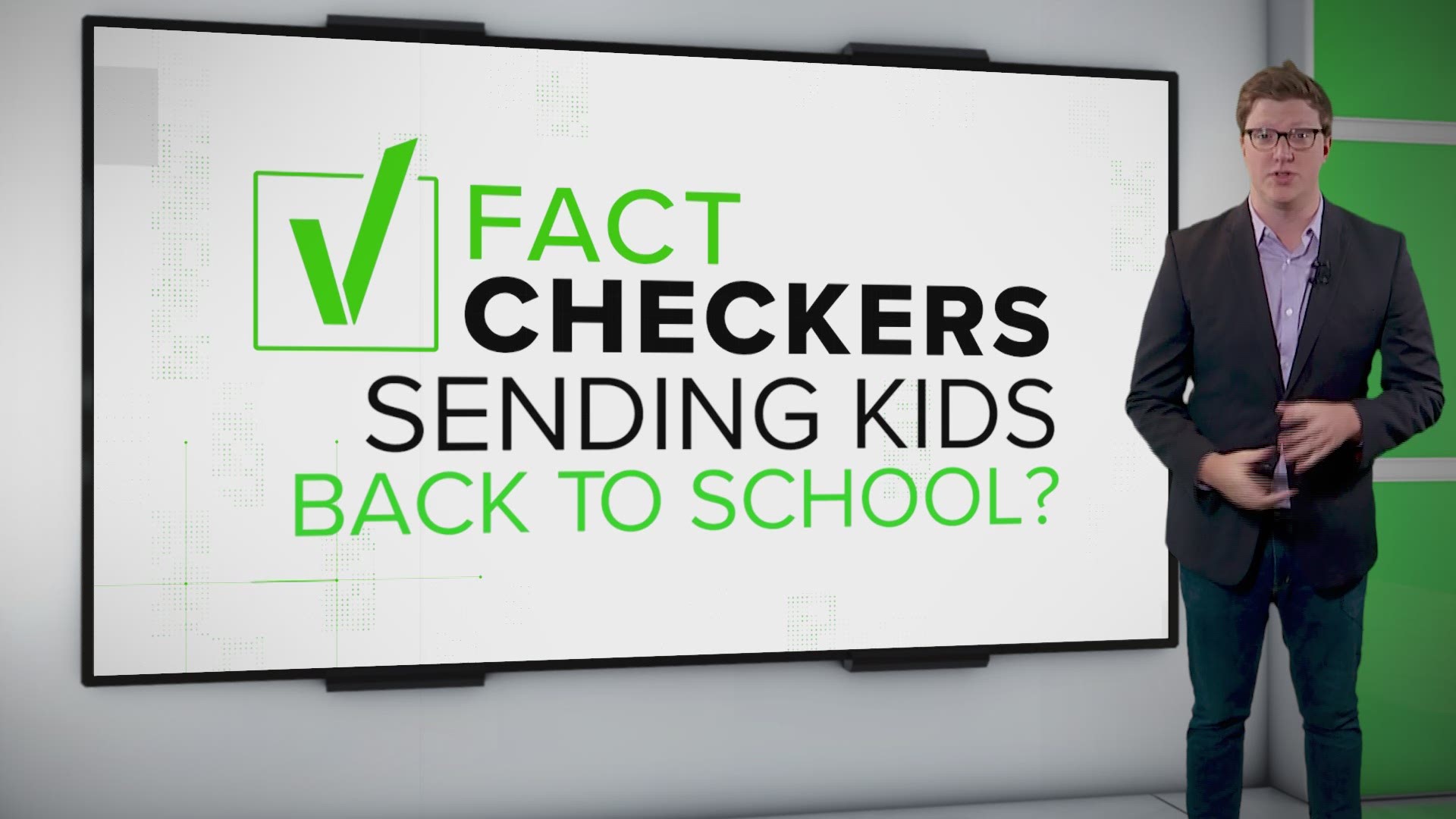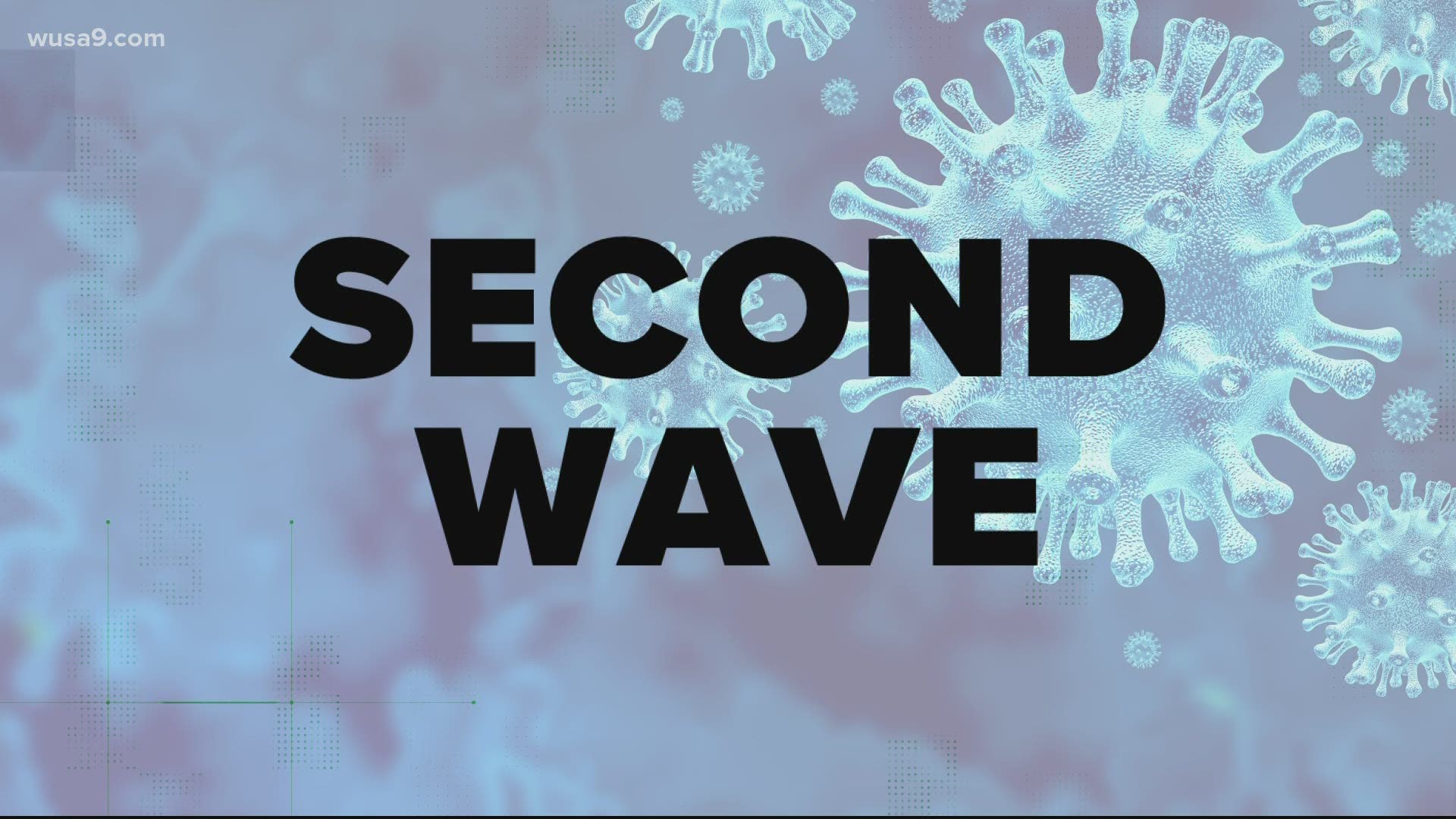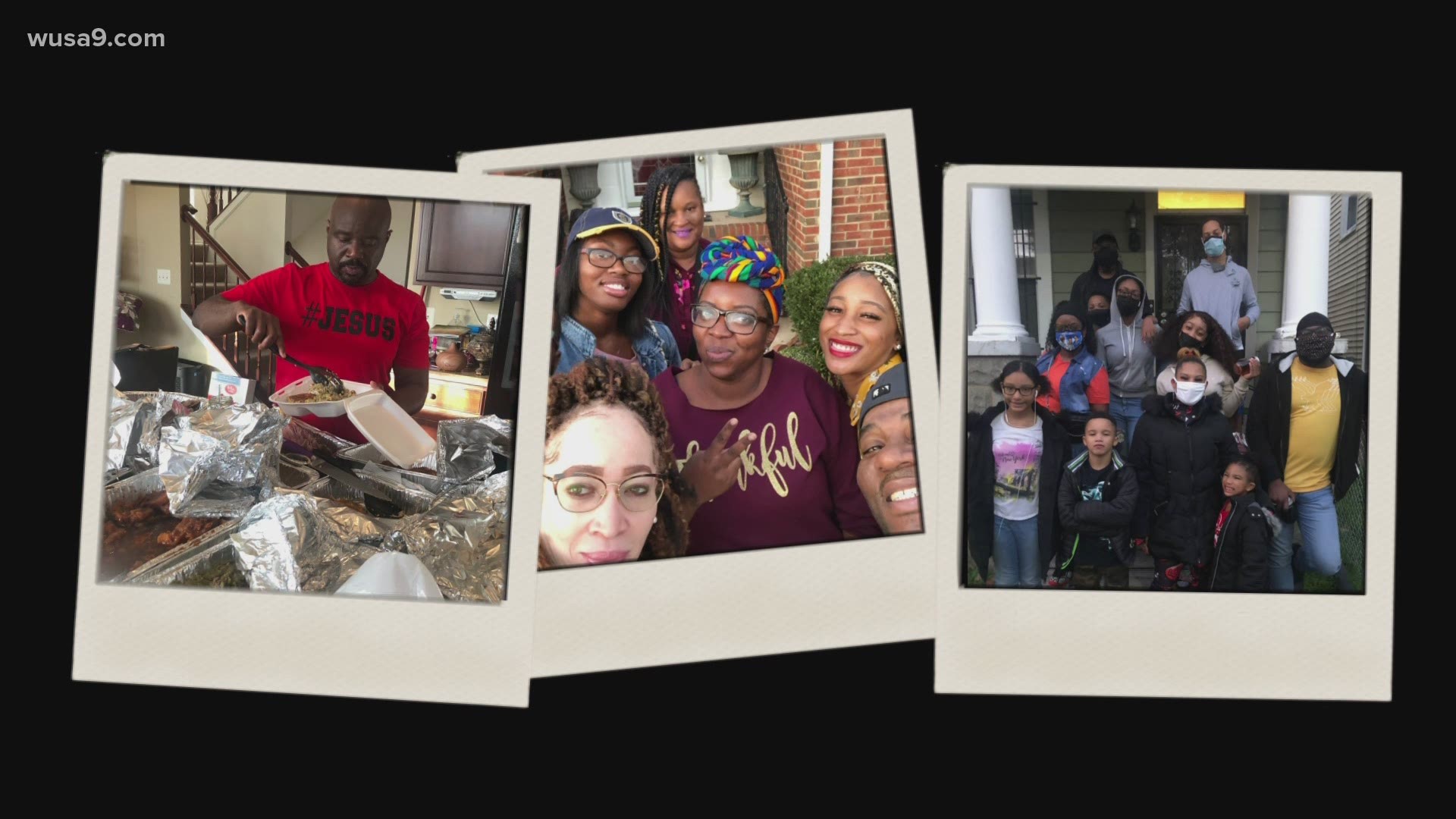TIMELINE: 18,000 dead. 1 million sick. It's been a roller coaster of a year since the first case of COVID in the DMV
The pandemic that forever changed lives began in earnest in the DMV 365 days ago. It has brought pain, loss and uncertainty. But it also brought us closer together.

“We think it’s going to have a very good ending for us. That I can assure you."
On Jan. 30, 2020, hours after WHO declared a global emergency, former President Donald Trump sought to reassure Americans that a new disease ravaging China was nothing to worry about. Two months later, coronavirus would find its way to Washington, D.C., rapidly spreading across the whole DMV, and claiming its first life, locally, less than two weeks later.
It's been 365 days exactly since Maryland Gov. Larry Hogan alerted us all to the very first COVID case in the area, and nearly 18,000 of our neighbors have perished in the fight against the deadly virus. It's been a year filled with change, loss and uncertainty. The world shut down, and businesses are still struggling to survive. Schools made the leap to virtual learning and we all made pivot after pivot in an attempt to thrive -- or merely survive -- in the new normal.
But there's a light at the end of the tunnel. People are getting the vaccine. And now we can start to talk about what life looks like after the pandemic. On this first anniversary of the day that changed everything, let's take a moment to honor all that we as a community have overcome in the last year. And for our neighbors still very much hurting, one thing is certain, we are now and forever in this together.
1 Year of Coronavirus in the DMV
MARCH 2020 THE BEGINNING
The major safety changes and the skepticism of the COVID-19 pandemic began in earnest for our region in the month of March. Following the first confirmed death of the coronavirus in the U.S. on Feb. 29, local leaders soon began detailing positive cases in the DMV. This prompted changes within school systems and the push for universal health guidance from the Centers for Disease Control and Prevention (CDC).
March 2: Several D.C., Maryland and Virginia universities started to cancel study abroad programs in China, South Korea, Italy amid coronavirus outbreaks and recall students from overseas and warn about spring break plans.
March 3: D.C. Mayor Muriel Bowser told a room full of reporters that D.C. had no confirmed cases of COVID-19. She also used the opportunity to talk about how the District planned to combat coronavirus if it were ever to make its way to D.C.
March 4: Metro launches its special pandemic task force to protect riders against the coronavirus. The transit agency said trains and stations will be disinfected about once each week.
March 4: D.C. Public Schools suspends all school-sponsored international travel events. The cancelations came "out of an abundance of caution" for faculty and students and from continued guidance from the CDC, the school district said.
March 5: Three positive COVID-19 cases confirmed in Maryland. Gov. Hogan declares a State of Emergency in Maryland.
March 6: First positive COVID-19 case confirmed in D.C.
March 7: The first case in Virginia is confirmed at Ft. Belvoir
March 10: Bowie University, George Washington University, American University and University of Maryland announced that classes will be online.
March 12: Alexandria announces its first presumptive case of COVID-19.
March 12: All Maryland public schools close
March 16: Gov. Hogan and D.C. Mayor Muriel Bowser begin shutting down bars, restaurants, gyms and movie theaters. Virginia Gov. Ralph Northam holds out in Virginia until March 23. Maryland delays its primary elections from April to June.
RELATED: Coronavirus updates DMV: March 16-29
March 17: Gov. Northam declared a public health emergency order and limits gatherings to 10 or fewer people.
March 18: The first coronavirus death was reported in Maryland as a Prince George's County resident in his 60s who suffered from an underlying medical condition. The man had no known travel history and may have contracted the virus through community transmission, Hogan said during a news conference on March 19. During this time, Maryland had 107 positive COVID-19 cases across the state, with 20 cases in Prince George's County -- the second most affected county in the state, behind Montgomery County with 31 cases.
March 18: Drive-up coronavirus testing sites become available in the DMV. Kaiser Permanente opened sites in Baltimore, Largo, Gaithersburg, Tysons Corner and Woodbridge. And Virginia Hospital Center and the Arlington Health Department have now opened another drive-up collection site to those with a doctor's note.
March 23: Gov. Northam closes indoor dining and orders all public schools to remain closed for the rest of the academic year. Northam warns that "new normal" will last months in Virginia.
March 27: President Donald Trump signed an unprecedented $2.2 trillion economic rescue package into law after swift and near-unanimous action by Congress.
APRIL 2020 FULL-ON LOCKDOWN
Maryland, D.C. and Virginia all ended March reporting their highest number of coronavirus cases per day so far. Throughout the month of April, many Americans staged protests to defy the orders against things shutting down across the country. Former President Donald Trump urged state officials to reopen businesses to prop up the economy, pushing for a quick return to normal.
April 2: The 2020 Democratic National Convention announced the convention had been pushed back one month to the week of Aug. 17 due to concerns about coronavirus, organizers announced.
April 5: Leilani Jordan, a Giant grocery store employee in Largo, died after being diagnosed with coronavirus.
April 9: D.C. Mayor Muriel Bowser announced that all shoppers at grocery stores in the District must wear masks due to the coronavirus outbreak.
April 13: The IRS started sending the first round of $1,200 stimulus checks to qualifying Americans.
April 20: President Donald Trump announced via tweet that he was planning on suspending all immigration into the United States due to the coronavirus pandemic.
April 23: The U.S. Senate approved the Paycheck Protection Program and Healthcare Enhancement Act, providing $484 billion in additional funding to the existing Paycheck Protection Program.
April 28: Gov. Hogan announced that Maryland has awarded more than $1.6 million in the first round of grants to 20 Maryland companies for pivoting to or expanding production of personal protective equipment (PPE).
April 29: Gov. Hogan issues an executive order requiring universal testing of all residents and staff at all Maryland nursing homes.
MAY 2020 BEGINNING A NEW 'NORMAL'
By May, people headed towards summer hoping for positive news that quarantining would bring the full reopening of businesses. That didn’t quite happen, but a “new normal” began to set in, including creative ways to celebrate weddings, graduations, Memorial Day and more. The month ended with the death of George Floyd, igniting social justice protests across the United States and leading the country to confront an overdue racial reckoning.
Nats Still Not Playing Baseball
The month of May saw sports make a comeback, such as the UFC, which was the first to return events while other sports still struggled to get back, including Nationals Opening Day, following a delay to the MLB season.
Graduation
Virtual graduations took over the web, with celebs entering Zoom calls as a surprise and families missing moments they may not get back, watching graduations from virtual set-ups.
“New Normal”
Once people realized quarantine was here to stay, and wasn't going to be a mere few weeks, the phrase "new normal" became a part of everyday life.
Census Troubles
The 2020 U.S. Census aligning with the pandemic worried officials about the impacts it will have on equitable reporting that leads to funding for communities across the nation.
Primary Voting
Special elections and primaries give DMV officials a first run at voting during the pandemic, foreshadowing what is to come for the 2020 Presidential Election.
Wedding Season
Wedding season forces some tough decisions to be made: Do we get married now and forego a celebration? Do we limit ourselves to just our closest friends? Do we attend a wedding ceremony that is being held?
Trying To Have Fun in the Sun
More people buying pools due to pandemic quarantining --- uptick in people playing golf (really popular over COVID-19). Golf also grows in popularity as one of the only outside sports to enjoy during the pandemic.
Slow Reopening
May 15: Gov. Northam says Virginia can enter Phase 1 of reopening. Northern Virginia holds out until May 30.
May 27: D.C. Mayor Muriel Bowser announced that the District would reopen following 14 days of a sustained decline in coronavirus cases in the city.
May 27: Gov. Hogan says Maryland is ready to complete Phase 1 of reopening and move to Phase 2.
May 29: Some area pools, drive-in theaters and youth camps start reopening.
Memorial Day
Health officials, like Dr. Anthony Faucci, warned of mass outbreaks if people celebrated the unofficial kick-off to warmer weather with BBQs and other "normal times" gatherings.
JUNE-AUGUST 2020 SUMMER PIVOT
The summer months brought with them a sense that we had turned a corner in fighting the coronavirus, as D.C, Maryland, and Virginia were all in Phase 2 of reopening by the end of June. Virginia announced it would enter Phase 3 of reopening in July.
May 29- June 23: Given the feeling that the coronavirus had hit a lull, the pandemic took a back seat to protests for social justice following the death of George Floyd. Washingtonians took to the streets for almost four straight weeks, beginning at the end of May to speak out for social justice. The largest day of protests happening on June 6.
June 11: Moderna announced its vaccine was on track to begin the testing phase in July.
June 28: Cases in D.C. and Maryland were declining in June, and Virginia’s cases had begun to plateau due to social distancing.
While cases in our region declined in June, some hoped the summer heat would kill the virus. That proved untrue.
July 4: July brought worries of superspreader events due to the Independence Day holiday, as officials worried people would ignore health warnings and gather in groups.
July 27: Mayor Bowser issued a travel order requiring people traveling to the District from high-risk states to quarantine for 14 days.
Adjusting to life in the pandemic also meant adjusting back-to-school plans as well, as many schools in our region announced they would opt for virtual learning for the coming school year, with a renewed focus on solving problems exposed earlier in the pandemic, and bridging the digital divide.
As the pandemic rolled into August, the Trump administration promised another round of $1,200 stimulus checks, but talks stalled.
August 15: The Food and Drug Administration (FDA) ramped up testing in August, granting approval of the first saliva test for COVID.
August 26: The FDA also approved the first rapid test.
August 23: Talk of convalescent plasma took center stage as a potential COVID-19 treatment after the FDA issued emergency use authorization.
August 28: Thousands of people attended the 2020 March on Washington despite the ongoing pandemic, some even said the pandemic motivated them to attend the event.
August 31: The first likely case of COVID-19 reinfection was reported in a man in Nevada.
OCTOBER-DECEMBER 2020 HOLIDAY SETBACK
Just as case numbers -- and outlooks on life -- started to look up, the phenomenon health officials had been warning about for months hit: the second wave of COVID-19. The DMV sees some of its highest numbers of the entire pandemic right before the holidays, prompting tense discussions about the safety of traveling to see family.
October 13: Maryland averages 22% more coronavirus cases a day than it was at the end of September. D.C.’s coronavirus trend increased sharply, up 84% since dropping to its lowest levels since July at the beginning of October. Virginia’s average case rate increased by 34% since Oct. 1 and the commonwealth recorded its second-highest single-day case count since the pandemic began on Oct. 8.
October 31: Nearly every county in the DMV advises against in-person trick or treating, and encourages neighborhoods to plan virtual or social distant activities instead.
November 4: 46% of Americans report voting absentee or by mail-in ballot on Election Day.
November 5: Maryland reported its highest one-day total of COVID-19 cases since July 25, leading Gov. Hogan to say, "It’s not that hard, just wear a damn mask."
November 19: The CDC officially advises against traveling for Thanksgiving.
November 24: In an attempt to discourage large gatherings, Montgomery County tightened COVID-19 restrictions once again; indoor gatherings of more than 10 people were prohibited and face coverings were to be worn at all times both outdoors and indoors within public facilities.
November 28: D.C. hit a new record-high number of coronavirus cases, reporting 371 new cases; the previous high of 335 cases was set on May 1.
November 29: Dr. Fauci warns that the U.S. may see "surge upon a surge" of the coronavirus, following Thanksgiving travel and the lack of adherence to stay-at-home guidance. AAA estimates roughly 50 million Americans took to the skies and roads.
RELATED: Fauci: 'Considerable risk of another surge' before holidays, advises against unnecessary travel
December 11: Prince George's County bans indoor dining for one month, limits capacity on retail stores and casinos.
December 15: Montgomery County bans indoor dining and limits capacity in retail stores.
December 23: D.C. shuts down indoor dining through the Inauguration. Maryland judges uphold the dining ban in Montgomery and Prince George's counties.
DECEMBER 2020- MARCH 2021 VACCINE DISTRIBUTION
As the end of 2020 neared, so did a light at the end of the tunnel: Vaccines. Even as the holiday season precipitated the worst spike in cases yet, vaccines began arriving. And as millions of Americans rejoiced following the FDA's Emergency Use Authorization approval of the first vaccine from Pfizer-BioNTech in December. But millions are still waiting anxiously for their turn.
December 11: The FDA authorized Pfizer-BioNTech as the first vaccine in the U.S. for emergency use, meaning distributors were given the green light to ramp up production.
December 14: The first dosages of a COVID-19 vaccine were distributed to Maryland, Virginia and D.C.
In Maryland, the first dose of vaccine in the state was administered to Shawn Hendricks, the Nursing Director of Medicine at the University of Maryland Medical Center in Baltimore. In Virginia, the first couple of doses were administered in the Hampton Roads and Richmond area.
In D.C., U.S. Secretary of Health and Human Services Alex Azar himself was present as the first doses were administered at George Washington University.
December 18: The second major vaccine, Moderna, was approved for emergency use authorization under the FDA. Americans now have two options for the vaccine.
December 30: The second round of stimulus checks, $600, starts to get sent out.
January 11: D.C. announces the District has vaccinated more people with at least one dose than had contracted the virus.
January 20: Joe Biden was sworn in as the 46th President of the United States, promising a "ramped up production" in vaccine distribution as part of his role as president. He announces the "American Rescue Plan", which details significant funding to research, testing facilities and scale-up supply production, as well as a hope to reopen a majority of K-8 schools nationwide in the first 100 days of office.
January 21: Gov. Hogan says he wants all Maryland schools reopened for in-person learning by March 1.
February 2: DCPS reopens for in-person learning for thousands of teachers and students for the first time.
February 5: Gov. Northam sets March 15 deadline for return to in-person learning in Virginia, says teacher vaccinations will be available for all who want it.
February 14: Virginia announces the commonwealth has now vaccinated one million people with at least one dose of a vaccine.
February 19: Maryland announces it has administered its one-millionth dose of the vaccine.
February 27: The FDA approves the one-shot Johnson & Johnson vaccine, making it the third major vaccine on the market.
March 3: President Joe Biden makes public remarks that a vast majority of Americans should be vaccinated by the end of May, an increase from his original timeline of July.
Now, exactly one year after the first case of COVID-19 in the DMV, the United States has three major vaccines authorized for emergency use and available on the market: Pfizer, Moderna and the newly-released one-shot Johnson & Johnson dose, with more awaiting approval.
Despite the increased rollout of these new vaccines, the last few months of distribution have been far from smooth around the District and the United States. Massive shortages, differing state parameters on who qualifies and when, and unequal distribution—toppled with hesitancy to even get the shot — have left many confused about when and how they can get their chance.
RELATED: You can now pre-register for a vaccine appointment in DC and be alerted when one is available


